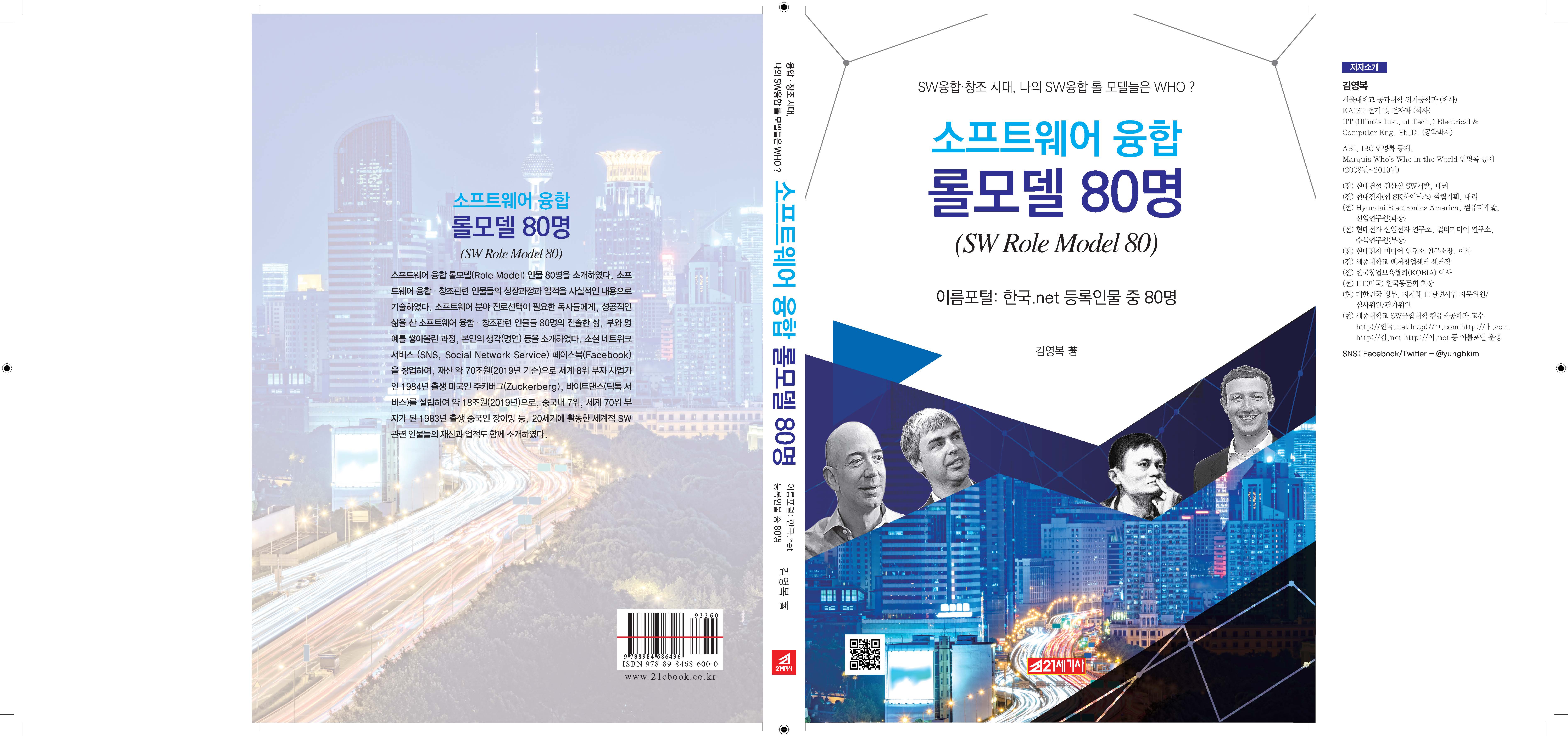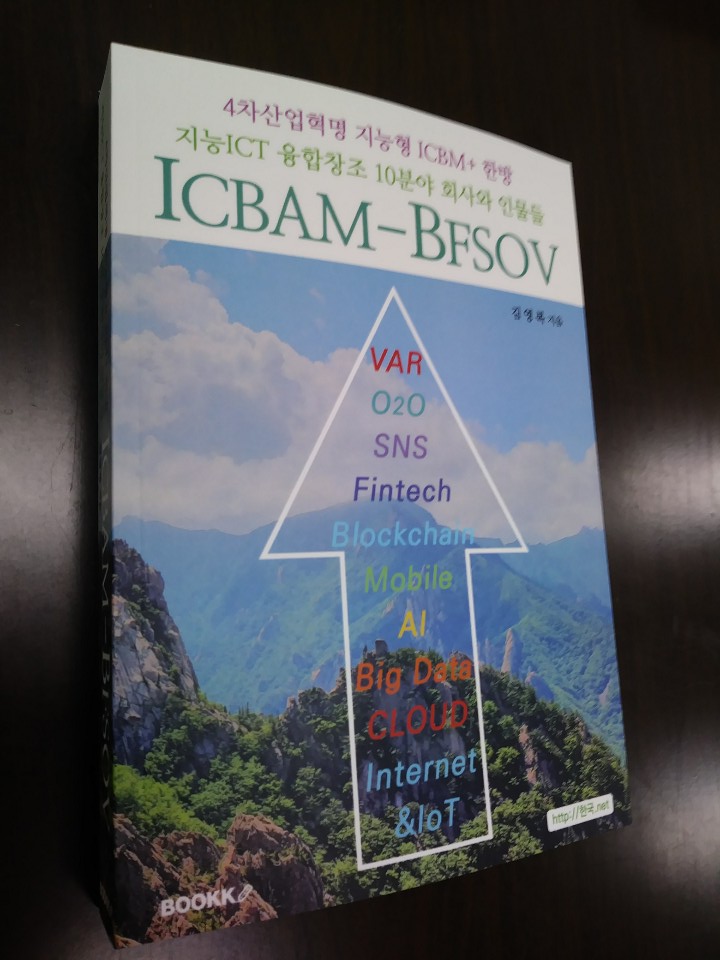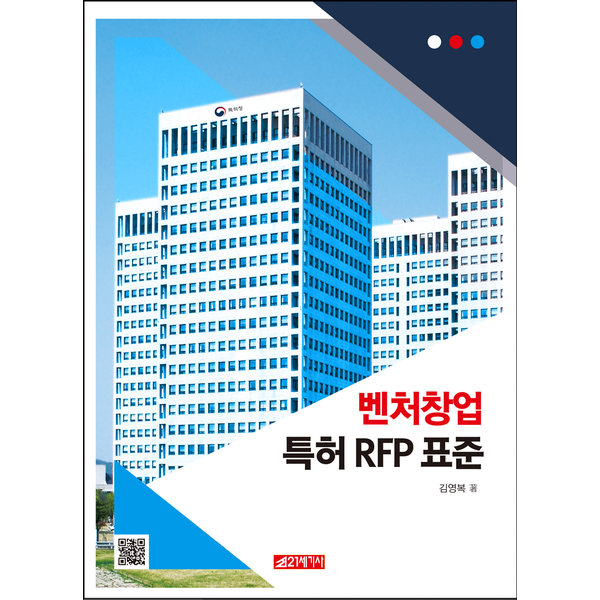[출생] 1859년 10월 18일, 프랑스 파리
[파리 여행]
[사망] 1941년 1월 4일 (81세), 프랑스 파리
[37분 Youtube 동영상]
[시대] 20세기 철학
[지역] 서양 철학
[학파] 대륙철학
[연구 분야] 유심론, 형이상학
[직업] 철학자
[분야] 생철학, 직관주의
[국적] 프랑스
[프랑스 여행]
[요약]
프랑스의 관념론 철학자로 생철학, 직관주의의 대표자였다.
콜라쥬 드 프랑스의 교수였다.
그 기본적 입장은 모든 사물의 근원으로서 '순수지속'을 주장하여,
과학적 인식에 의한 물질ㆍ시간ㆍ운동은 이 지속의 안에
보여지는 여러 형태들이며 지속의 고정화라고 한다.
따라서 이 지속 그 자체는 신비적인 직관에 의해서만 파악되고,
여기에서는 아는 활동과 실재를 창조하는 활동이 일치한다고
주장했다.
[베르그송 철학]
그리고 관념론적 생물학의 입장에서
생기론(生氣論)을 도입하여
생명의 자유로운 '창조적 진화'를 주장했다.
사회적 견해에서는 각 계급의 불평등이 '자연적인'상태이며,
전쟁은 '자연 법칙'으로 불가피하다고 했다.
[생애 활동 및 업적 등]
앙리-루이 베르그송(Henri-Louis Bergson,
1859년 10월 18일 ~ 1941년 1월 4일)은 프랑스의 철학자이다.
베르그송은 1859년 10월 18일 프랑스 파리에서 태어났다.
폴란드계 유태인인 아버지와 영국계 유태인인 어머니 사이에서
7남매 중 둘째, 장남으로 태어났다.
부친은 젊어서 프랑스로 이민을 온 폴란드계 유태인으로
음악가였으며 모친은 영국인이었다.
베르그송은 모친을 통해 일찍부터 영어에 가까워질 수 있었다.
아버지는 작곡가였으나 그렇게 신통하지는 않아서
경제적으로는 어려운 시절을 보냈던 것으로 추정된다.
1868년, 아홉 살이 되던 해 베르그송은 프랑스에서
교육 환경이 좋기로 유명한 고등학교,
리세 보나빠르트(Lycee Bonaparte)에 입학한다.
1869년 베르그송이 10살이 되던 해에
가족이 모두 영국 런던으로 이주하였으며,
어린 베르그송은 혼자 파리에 남아 기숙사 생활을 시작했다.
베르그송은 어린 시절부터 뛰어난 학생이었고 고등학교 때는
국내외의 경시대회에서 고전에서 불문학, 수학에 이르기까지
각종 분야의 상을 독차지했다.
베르그송은 한 마디로 말해 천재였다.
프랑스 전국 학력경시대회에서 라틴어 작문, 영어, 기하학,
불작문, 수학에서 1등을 차지하였으며,
그 외 과목도 3등, 4등을 차지하는 등 전과목에서 뛰어났다.
1877년 수학 경시대회에서 제시된 베르그송의
<파스칼의 '세 개의 원'에 대한 해법>은 다음 해
수학 연감(Nouvelles annales de mathematiques)에 실렸다고 한다.
이처럼 베르그송은 "집에서 따로 공부할 필요가 없고
칠판 앞에서 풀기만 하면 되는" 정도로
수학에 뛰어난 재능을 보였으나 라슐리에의
≪귀납의 기초에 관하여≫를 읽고 "철학에도 뭔가
'심각한serieux' 것이 있을 수 있음을 깨닫고"
철학으로 진로를 선회한다.
베르그손은 19세 때 파리고등사범학교
(ecole normale superieure)에 입학한다.
고등사범학교는 인문학 분야를 공부하고 싶은
프랑스의 영재들이 모이는 곳으로 샤르트르, 자크 데리다,
장 조레스 등 수많은 명사를 배출한 곳이다.
베르그손은 당시에 수석인 장 조레스에 이어 3등으로
학교에 입학했다.
22살에 철학 교수 자격시험(Agregation)에
2등으로 합격하여(3등은 장 조레스)
앙제 고등학교에 철학 교수로 발령된다.
후에 끌레르몽-페랑, 앙리4세 고등학교에서 철학 교수를 지냈다.
33살때인 1892년, 14세 연하인 루이즈 뇌뷔르제와 결혼한다.
이듬해에 외동딸인 쟌느가 출생한다.
베르그송은 소르본느 대학 교수직에 2번 지원했으나 실패하고,
39살 때 고등사범학교 전임강사, 41살 때에 꼴레쥬 드 프랑스의
그리스-라틴 철학 담당 교수, 1904년에는 현대철학 교수가 된다.
이후 베르그송은 아카데미 프랑세즈 회원이 되는 등
철학 교수로서 활발히 활동을 벌이게 된다.
1917년에는 미국의 1차대전 참전을 위해
윌슨 대통령을 설득하러 외교관으로 미국에 다녀오기도 한다.
베르그송의 저서들은 매우 유려한 문체와 이해하기 쉬운 비유로
대중적으로도 인기가 매우 높아,
주저중 하나인 창조적 진화등의 주저들이 수십 쇄를 찍는 등
높은 판매량을 보이기도 했다.
62살 때에 꼴레쥬 드 프랑스 교수직에서 은퇴하고,
이듬해에는 현 UNESCO의 전신인 국제 지적 협력
국제위원회(CICI) 회원이 되었다.
전후 윌슨이 꿈꾸던 국제연맹의 학술분과 기구에서
의장직을 맡으며 마리 퀴리, 알베르트 아인슈타인
같은 사람들과 같이 활동하기도 했다.
8월에는 의장에 올랐다.
베르그송이 63살 되던 해에
아인슈타인과 시간 개념에 대한 유명한 논쟁을 벌였다.
베르그송의 철학을 돌이켜봤을 때
과학계와는 다툼이 불가피했으리라 여겨진다.
<지속과 동시성>이 그 책이다.
이어 베르그송이 68살 때인 1928년에는
그간의 공로와 꾸준히 찬사를 받아오던 문장력을 인정받아
노벨 문학상을 수상하기에 이른다.
[사망]
베르그송은 자신의 행위가 격동의 20세기를 살아가고 있던
유대인들에게 어떤 영향을 미칠지 항상 신경쓰던 사람이었다.
가톨릭으로 개종하려 했으나,
고통받고 있는 유대인들의 편에 서기 위해
끝까지 유대교인으로 남기로 결심한 일화는 유명하다.
말년에는 류머티즘 질환으로 고생하다가
나치 독일의 지배에 떨어진 파리에서
혹독한 추위에도 불구하고 비시 프랑스 정부의
예외로 해주겠단 말도 무시하고
[찬조 음악]
유대인으로 자신의 신분을 등록하기 위해
줄서서 기다리다가 폐렴에 걸린 것이 원인이 되어 사망했다.
[추모 K-Pop]
1940년 프랑스가 함락된 후 프랑스를 점령한 유대인들은
경찰서에 등록해야 했다.
Bergson은 경찰 양식을 작성할 때
다음과 같이 항목을 작성했다.
"학문. 철학자. 노벨상 수상자. 유대인."
베르그송은 죽을 때까지 류머티즘으로 고생하다가
1941년 1월 4일,
81를 일기로 점령지 파리에서 폐렴으로 사망했다.
[추모 K-Pop]
로마 카톨릭 신부는 베르그송의 요청에 따라
베르그송의 장례식에서 기도를 했다.
Bergson은 Hauts-de-Seine의
Cimetiere de Garches에 묻혀 있다.
[사상]
베르그송은 인간의 생명을 가장 중시하며
'생의 철학' 을 주장한 사람으로서,
베르그송의 철학을 창조적 진화의 철학이라고 부르고 있다.
베르그송은 '있다'는 것은 오직 우리들의 체험을 통한
경험이나 느낌으로만 알 수 있다고 말하였다.
또 현재라는 의식 속에는 과거나 미래도 모두 포함되어 있으며,
모든 것이 변하는 현재의 시간이야말로 우주의 가장
본질적인 것이라고 주장하였다.
인간과 사회에 관한 그의 관점 또한
'시간', '변화', '운동' 에 중점을 두고 재해석한 것이다.
종교에는 고정적인 제도, 고로 폐쇄적이게 되는 종교와
시대에 따라 변하는 개방적 종교가 있다고 하여
후자가 필연적으로 살아남게 된다는 것을 역설하였다.
도덕에 관한 관점 또한 기존의 고정되어 있는
전통적 도덕의 체계보다 시시각각 움직이고 계속 변화되어
가는 원칙을 가진 유기체적 도덕의 우수성을 옹호하였다.
사회에 대한 관점에서도 그는 고정되고 닫힌 폐쇄된 사회보다는
변화되고 움직이는 '열린 사회'를 주장하였다.
칼 포퍼는 <열린 사회와 그 적들>에서
'열린 사회'라는 용어가
베르그송에게서 빌려온 것임을 밝히기도 했다.
이 사회철학은 <도덕과 종교의 두 원천> 이라는
베르그송의 마지막 주저에 서술 되어 있는데,
베르그송은 이 마지막 저서를 1932년,
베르그송의 나이 73세때 출판 하였다.
이때는 이미 <창조적 진화>가 출판된 지
25년이나 지난 후였는데,
이 책이 출판된 후 사람들은 이미 70대인
이 노철학자의 사유의 유연함이
청년같음을 보고 놀랐다고 한다.
[영향]
플라톤 이후 2000년 넘게 이어져왔던 물질들의 "정지"를
전제로 한 존재론 위주의 철학적 담론을,
베르그송은 당대의 최첨단의 과학 지식들을 흡수하려고
노력하여(그는 그의 저서 '물질과 기억'의 단 3페이지를
쓰기 위하여 병리학을 5년동안 공부하기도 하였다)
"운동"으로 전환시켜,
이후의 철학 사조들(화이트헤드, 들뢰즈 등)의
사상적 기원이 되고 있다는 평가이다.
고대 그리스에서는 학문을 성립시키기 위해서
운동을 되도록 거부할 수밖에 없었다.
왜냐하면 학문이라는 것은 일종의 분석작업이고,
'분석'이 가능하려면 동일률(자기동일성)이 확보되어야 한다.
학문이 탐구할 대상은,
분석하기 이전과 이후가 동일해야 한다.
그렇지 않고 탐구대상이 분석 과정중에 변화한다면,
분석의 의미 자체가 없어지기 때문이다.
만약 헤라클레이토스가 주장한,
모든것은 매순간 계속 변하고 있고, 한순간도 정지가 없다는
전제를 받아들이면 학문은 불가능하다.
정지는 고대인들의 상식적인 경험에도 비추어 보아도
올바르게 보였고, 학문을 위해서도 필요했던 것이다.
또한 플라톤 당대의 과학적 지식으로는 운동이라는 것을
제대로 알 수 없었고,
그것을 바탕으로 이루어진 정신과 물질의 잘못된 이원론을
그는 당대의 과학적 성취를 통한 근거를 통해 '정지'가
곧 인간 지성의 '영화적 메커니즘'으로,
실재로는 존재하지 않는 하나의 가상적 상태
(예를 들어 세슘원자는 1초에 91억 9263만 1770번
진동한다)임에도 불구하고
이것을 실재로 가정하여
'애초부터 풀 수 없게 만들어진 문제' 임을 밝히고,
이후의 철학적 주류 담론을 무려 2000년간 지속되던 하나의 환상,
곧 '정지' 에서 '운동' 으로,
또한 이것이 기반하는 인식론의 주제를 '공간' 에서 '시간' 으로,
생명현상의 파악 과정에서는 그 근거를 '양'에서 '질'로
바꿔 놓았던 것이다.
[프랑스 샹숑]
[저서]
한국어역 <의식에 직접 주어진 것들에 관한 시론>, 최 화 옮김,
아카넷, 2001.
아카넷, 2005. 또 다른 철학자인 질 들뢰즈의 사상을 이해하는 데
꼭 필요한 책
한국어역 <웃음>, 김진성 옮김, 종로서적, 1983.
정한택 옮김, 박영사,
1980. <창조적 진화>, 황수영 옮김, 아카넷, 2004.
한국어역 <도덕과 종교의 두 원천>, 송영진 옮김, 서광사, 1998.
김재희 역, 지만지, 2009.
이광래 옮김, 문예출판사, 1993.
[프랑스 샹숑]
---------------------------
[챗 GPT 답변에 오류(hallucination: 환각 등)가 있으니,
단순 재미로만 참조바람: 3無 신뢰성 없음, 정확성 없음, 일관성 없음]
(from https://chat.openai.com/chat)
베르그송(Henri Bergson, 철학자, 노벨상, France)이
제일 좋아한 역사적 인물은?
베르그송( Henri Bergson)이 가장 좋아했던 역사적 인물은
블레즈 파스칼(Blaise Pascal)로 알려져 있습니다.
블레즈 파스칼은 프랑스의 수학자, 물리학자, 철학자로, 1
7세기에 활동한 중요한 인물 중 하나입니다.
그의 작품은 확률론, 수학, 종교 철학,
철학적 사고에 관한 것이며,
그의 아이디어와 작품은 베르그송의 철학적 사고에
큰 영향을 미쳤습니다.
따라서 베르그송은 블레즈 파스칼의 철학을
깊이 이해하고 존경했습니다.
베르그송(Henri Bergson, 철학자, 노벨상, France)이
좋아할만한 한국의 트로트나 발라드 노래 제목은 무엇일까?
베르그송이 좋아할만한 한국의 트로트나
발라드 노래의 제목은 개별적으로 정확히 알 수 없습니다.
베르그송은 19세기와 20세기 초기에 활동한
프랑스의 철학자이며,
그의 주요 관심사는 시간, 무의식, 창의성 등의 주제였습니다.
따라서 그가 어떤 한국의 노래를 좋아할 것인지
정확히 예측하는 것은 어려울 것입니다.
그러나 베르그송의 철학적 흥미사와 관련된 주제나 감성을
담고 있는 한국의 노래 중에서 그가 감동받을 만한 곡을
찾을 수 있을 것입니다.
노래의 가사와 분위기를 고려하여 베르그송의 관
심사와 일치하는 곡을 선택하는 것이 좋을 것입니다.
베르그송(Henri Bergson, 철학자, 노벨상, France)이
경험한 재미있는 일화(episode)는?
베르그송(Henri Bergson)의 생애에서
재미있는 에피소드 중 하나는 그의 유명한 책
"시간과 자유"("Time and Free Will")를 쓰는 과정에서
발생한 일화입니다.
이 책은 그의 중요한 철학적 작품 중 하나로,
시간과 인간의 자유의 관계에 대한 이론을 다루고 있습니다.
재미있는 점은 베르그송이 이 책을 쓸 때
철학적인 아이디어들을 개발하고 표현하기 위해
여러 번 무엇인가를 느끼기 위해 자전거를 타고 다니는
습관을 가졌다는 것입니다.
그는 자전거를 타면서 생각을 정리하고
새로운 아이디어를 고안했다고 합니다.
이 독특한 습관은 그의 철학적 작업에 큰 도움이 되었으며,
그의 저서에서는 자전거를 타는 경험에 관한
에피소드를 언급하기도 했습니다.
이는 그의 철학을 발전시키는 과정에서의
흥미로운 일화 중 하나로 기억됩니다.
베르그송(Henri Bergson, 철학자, 노벨상, France)은
얼마나 양심적인 사람일까?
베르그송(Henri Bergson)은 양심적이고 철학적으로
심층적인 사상을 갖고 있었던 철학자 중 하나로 평가됩니다.
그의 철학은 주로 인간의 경험과 인간의 내면 세계에
관한 것이었으며,
시간, 기억, 창의성 등의 주제에 대해 고찰하였습니다.
그의 양심적 접근은 그의 철학의 핵심 중 하나였으며,
그는 직관적인 지식과 직관을 강조했습니다.
그는 인간의 내면 경험과 직관을 통해 진리와 현실을
이해하고 표현하는 것이 중요하다고 믿었습니다.
그의 철학은 논리와 분석보다는 직관과 경험을 중요시하며,
이러한 관점으로 양심적이고 깊이 있는 사유를 장려했습니다.
따라서 베르그송은 양심적인 사상을 가진 철학자로 평가되며,
그의 작품은 철학적인 사색과 인간의 내면 세계에 대한
탐구를 통해 이러한 양심적 철학을 나타내고 있습니다.
베르그송(Henri Bergson, 철학자, 노벨상, France)의
양심(Conscience) 등급(Grade)을
A(매우 우수), B(우수), C(보통), D(낮음) 로 Grading 한다면,
베르그송(Henri Bergson, 철학자, 노벨상, France)의
양심등급(Conscience Grade)은?
베르그송(Henri Bergson)의 양심을 등급(A, B, C, D)으로
분류하는 것은 주관적인 판단에 따라 다를 수 있으며,
그의 양심에 대한 등급을 공식적으로 할당할 수 없습니다.
양심은 개인적이며 주관적인 경험 및 철학적 관점에 따라
해석될 수 있는 개념입니다.
따라서 어떤 사람은 그의 양심을 매우 우수하게
평가할 수도 있고, 다른 사람은 그를 다르게 평가할 수 있습니다.
베르그송의 철학적 관점과 그의 양심에 대한 이론은
그의 작품과 철학에 관심을 가지는 사람들에게
중요하고 가치 있을 수 있지만,
등급으로 나누기는 어려운 일입니다.
양심에 대한 판단은 주관적이며,
철학자나 개인의 양심은 복잡하고 다양한 상황에서
형성되기 때문입니다.
=======================================
Henri Bergson
[Born] 18 October 1859
Paris, France
[Died] 4 January 1941 (aged 81)
Paris, France
[Awards]
Nobel Prize in Literature (1927)
[Era] 20th-century philosophy
[Region] Western Philosophy
[School]
Continental philosophy
French Spiritualism
[Main interests]
Metaphysics, epistemology, philosophy of language,
philosophy of mathematics
[Notable ideas]
Duration, intuition, elan vital, open society
Henri-Louis Bergson
(18 October 1859 – 4 January 1941)
was a major French philosopher,
influential especially in the first
half of the 20th century.
Bergson convinced many thinkers that the processes
of immediate experience and intuition are more significant
than abstract rationalism and science for
understanding reality.
He was awarded the 1927 Nobel Prize in Literature
"in recognition of his rich and vitalizing ideas
and the brilliant skill with which they have been presented".
In 1930 France awarded him its highest honour,
the Grand-Croix de la Legion d'honneur.
[Biography]
[Overview]
Bergson was born in the Rue Lamartine in Paris,
not far from the Palais Garnier (the old Paris opera house)
in 1859.
His father, the pianist Micha Bergson,
was of a Polish Jewish family background
(originally bearing the name Bereksohn).
His mother, Katherine Levison,
daughter of a Yorkshire doctor,
was from an English and Irish Jewish background.
The Bereksohns were a famous Jewish entrepreneurial family
of Polish descent.
Henri Bergson's great-great-grandfather,
Szmul Jakubowicz Sonnenberg, called Zbytkower,
was a prominent banker and a protege of Stanislaw August
Poniatowski, King of Poland from 1764 to 1795.
Henri Bergson's family lived in London for a few years
after his birth, and he obtained an early familiarity
with the English language from his mother.
Before he was nine, his parents settled in France,
Henri becoming a naturalized French citizen.
Henri Bergson married Louise Neuberger,
a cousin of Marcel Proust (1871–1922), in 1891.
(The novelist served as best man at Bergson's wedding.)
Henri and Louise Bergson had a daughter, Jeanne,
born deaf in 1896.
Bergson's sister, Mina Bergson (also known as Moina Mathers),
married the English occult author Samuel Liddell MacGregor
Mathers, a founder of the Hermetic Order of the Golden Dawn,
and the couple later relocated to Paris as well.
Bergson lived the quiet life of a French professor,
marked by the publication of his four principal works:
1.in 1889, Time and Free Will
(Essai sur les donnees immediates de la conscience)
2.in 1896, Matter and Memory (Matiere et memoire)
3.in 1907, Creative Evolution (L'Evolution creatrice)
4.in 1932, The Two Sources of Morality and Religion
(Les deux sources de la morale et de la religion)
In 1900 the College of France selected
Bergson to a Chair of Greek and Latin
Philosophy, which he held until 1904.
He then replaced Gabriel Tarde in the
Chair of Modern Philosophy, which he
held until 1920. The public attended
his open courses in large numbers.
[Philosophy]
Bergson rejected what he saw as the
overly mechanistic predominant view of
causality (as expressed in, say,
finalism). He argued that we must allow
space for free will to unfold in an
autonomous and unpredictable fashion.
While Kant saw free will as something beyond time and space
and therefore ultimately a matter of faith,
Bergson attempted to redefine the modern conceptions of
time, space, and causality in his concept of Duration,
making room for a tangible marriage of free will with causality.
Seeing Duration as a mobile and fluid concept,
Bergson argued that one cannot understand Duration
through "immobile" analysis,
but only through experiential, first-person intuition.
[Creativity]
Bergson considers the appearance of novelty as a result
of pure undetermined creation,
instead of as the predetermined result of mechanistic forces.
His philosophy emphasises pure mobility,
unforeseeable novelty, creativity and freedom;
thus one can characterize his system as a process philosophy.
It touches upon such topics as time and identity,
free will, perception, change, memory, consciousness,
language, the foundation of mathematics
and the limits of reason.
Criticizing Kant's theory of knowledge
exposed in the Critique of Pure Reason
and his conception of truth — which he
compares to Plato's conception of truth
as its symmetrical inversion (order of
nature/order of thought) — Bergson
attempted to redefine the relations
between science and metaphysics,
intelligence and intuition, and
insisted on the necessity of increasing
thought's possibility through the use
of intuition, which, according to him,
alone approached a knowledge of the
absolute and of real life, understood as pure duration.
Because of his (relative) criticism of intelligence,
he makes a frequent use of images and
metaphors in his writings in order to
avoid the use of concepts, which (he
considers) fail to touch the whole of
reality, being only a sort of abstract
net thrown on things.
For instance, he says in The Creative Evolution
(chap.III) that thought in itself would
never have thought it possible for the
human being to swim, as it cannot
deduce swimming from walking.
For swimming to be possible, man must throw
itself in water, and only then can
thought consider swimming as possible.
Intelligence, for Bergson, is a
practical faculty rather than a pure
speculative faculty, a product of
evolution used by man to survive.
If metaphysics is to avoid "false
problems", it should not extend to pure
speculation the abstract concepts of
intelligence, but rather use intuition.
The Creative Evolution in particular
attempted to think through the
continuous creation of life, and
explicitly pitted itself against
Herbert Spencer's evolutionary philosophy.
Spencer had attempted to transpose Charles Darwin's theory
of evolution in philosophy and to construct
a cosmology based on this theory
(Spencer also coined the expression "survival of the fittest").
Bergson disputed what he saw as Spencer's
mechanistic philosophy.
Henri Bergson’s Lebensphilosophie
(Philosophy of Life) can be seen as a
response to the mechanistic philosophies of his time,
but also to the failure of finalism.
Indeed, he considers that finalism is unable to
explain "duration" and the "continuous creation of life",
as it only explains life as the progressive development of
an initially determined program — a notion which remains,
for example, in the expression of a "genetic program";
such a description of finalism was adopted,
for instance, by Leibniz.
It clearly announces Alfred North Whitehead's.
Bergson regarded planning beforehand
for the future as impossible, since
time itself unravels unforeseen
possibilities. Indeed, one could always
explain a historical event retrospectively by its conditions
of possibility.
But, in the introduction to the Pensee et le mouvant,
he explains that such an event created retrospectively
its causes, taking the example of the creation
of a work of art, for example a symphony:
it was impossible to predict what would be the symphony
of the future, as if the musician knew what symphony
would be the best for his time, he would realize it.
In his words, the effect created its cause.
Henceforth, he attempted to find a third way
between mechanism and finalism, through the notion
of an original impulse, the elan vital, in life,
which dispersed itself through evolution
into contradictory tendencies
(he substituted to the finalist notion of
a teleological aim a notion of an original impulse).
[Duration]
The foundation of Henri Bergson’s
philosophy, his theory of Duration, he
discovered when trying to improve the
inadequacies of Herbert Spencer’s
philosophy. Bergson introduced Duration
as a theory of time and consciousness
in his doctoral thesis Time and Free
Will: An Essay on the Immediate Data of
Consciousness as a response to another
of his influences: Immanuel Kant.
Kant believed that free will could only
exist outside of time and space, that
we could therefore not know whether or
not it exists, and that it is nothing
but a pragmatic faith. Bergson
responded that Kant, along with many
other philosophers, had confused time
with its spatial representation.
In reality, Bergson argued, Duration is
unextended yet heterogeneous, and so
its parts cannot be juxtaposed as a
succession of distinct parts, with one
causing the other. Based on this he
concluded that determinism is an
impossibility and free will pure
mobility, which is what Bergson
identified as being the Duration.
[Intuition]
Duration, as defined by Bergson, then
is a unity and a multiplicity, but,
being mobile, it cannot be grasped
through immobile concepts. Bergson
hence argues that one can grasp it only
through his method of intuition. Two
images from Henri Bergson’s An
Introduction to Metaphysics may help
one to grasp Bergson's term intuition,
the limits of concepts, and the ability
of intuition to grasp the absolute. The
first image is that of a city.
Analysis, or the creation of concepts
through the divisions of points of
view, can only ever give us a model of
the city through a construction of
photographs taken from every possible
point of view, yet it can never give us
the dimensional value of walking in the
city itself. One can only grasp this
through intuition; likewise the
experience of reading a line of Homer.
One may translate the line and pile
commentary upon commentary, but this
commentary too shall never grasp the
simple dimensional value of
experiencing the poem in its
originality itself. The method of
intuition, then, is that of getting
back to the things themselves.
[Elan vital]
Elan vital ranks as Bergson's third
essential concept, after Duration and intuition.
An idea with the goal of explaining evolution,
the Elan vital first appeared in 1907’s Creative Evolution.
Bergson portrays Elan vital as a kind of vital impetus
which explains evolution in a less mechanical
and more lively manner, as well as accounting for
the creative impulse of mankind.
This concept led several authors to characterize Bergson
as a supporter of vitalism—although he criticized
it explicitly in The Creative Evolution, as he thought,
against Driesch and Johannes Reinke (whom he cited)
that there is neither "purely internal finality nor
clearly cut individuality in nature":
Hereby lies the stumbling block of vitalist theories (...)
It is thus in vain that one pretends to reduce finality
to the individuality of the living being.
If there is finality in the world of life,
it encompasses the whole of life in one indivisible embrace.
[Laughter]
In Laughter: An Essay on the Meaning of the Comic,
Bergson develops a theory not of laughter itself
but of how laughter can be provoked
(see his objection to Delage, published in the
23rd edition of the essay).
He describes the process of laughter
(refusing to give a conceptual
definition which would not approach its reality),
used in particular by comics and clowns,
as the caricature of the mechanism nature of humans
(habits, automatic acts, etc.), one of the two tendencies
of life (degradation towards inert matter and mechanism,
and continual creation of new forms).
However, Bergson warns us that
laughter’s criterion of what should be
laughed at is not a moral criterion and
that it can in fact cause serious
damage to a person’s self-esteem. This
essay made his opposition to the
Cartesian theory of the animal-machine obvious.
(from naver.com wikipedia.org 네이버 지식백과 나무위키 등,
추천 유튜브 동영상,
** Selected & Recommended Youtube Videos are shown. **)
Creative evolution, Continental, Continual Creation, Influence(+) ~
(PIG: time-variant)
Positive Influence GRADE (PIG): C+







